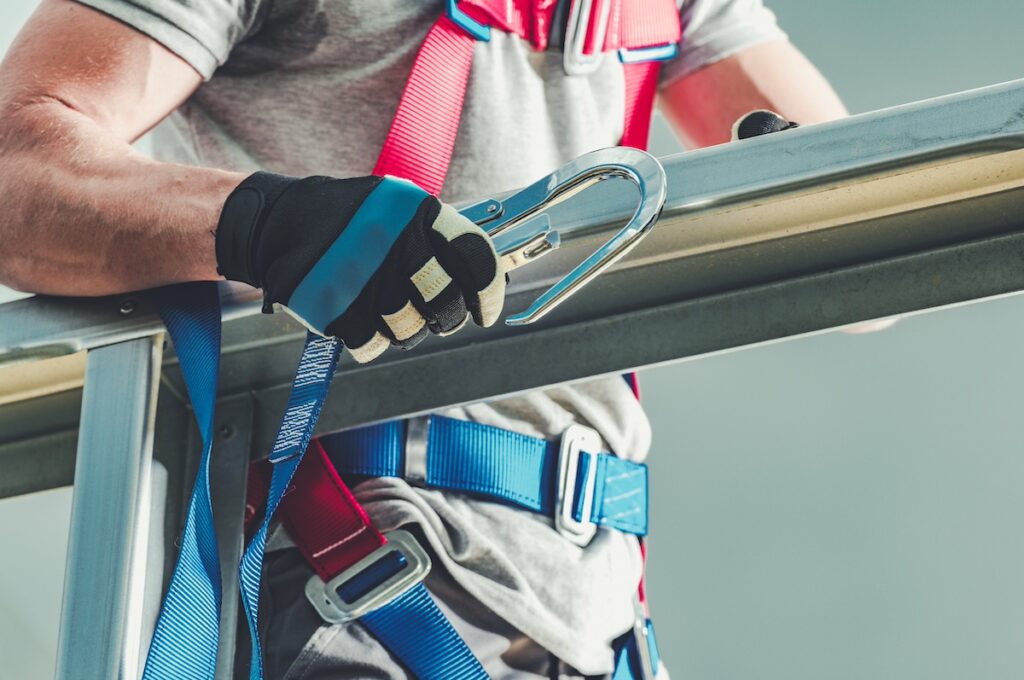Safety harnesses have the important job of holding your weight in a specific way to prevent the likelihood of falls from a height.
With falls from a height continually cited as the biggest cause of workplace fatalities, ensuring your equipment is in order including through regular checks is non-negotiable.
However, a common question relates to the frequency with which safety harnesses should be inspected.
While no substitute for official and safety advice or consulting your manufacturer guidelines, here is a general overview of what to look out for when ensuring your safety harness is fit for use.
Pre-Use Checks
Before putting on a safety harness, you must always inspect its condition to ensure there are no obvious defaults that pose a safety risk.
Conduct visual and tactile inspirations of the webbing to see if there are signs of damage such as frayed stitching, loose stitching, fading or bobbling of the material.
Also, check the harness and plastic loops for any sign of damage or rust.
If there is any doubt about the integrity of the harness and its components, then you should raise the issue and swap out the gear for a harness that is fully intact. Do not complete the intended work until you are confident of your safety setup.
Frequently Used Lanyards
Frequently used lanyards cover scenarios where the safety harness is used in arduous environments that may subject the harness to more wear and tear or damage.
For instance, scaffolding, demolition, construction or steel skeletal mats that have edges or protrusions.
In-depth inspections of the equipment which go beyond pre-checks are required, and the recommended frequency is every 3 months.

Detailed Inspections
More intrinsic inspections known as detailed inspections should be carried out at least every 6 months. The condition of the harness and all of its applicable components must be recorded.
The HSE advises that if a safety harness has not been inspected within 6 months, it should be withdrawn from use and inspected by a competent person. Only if the equipment meets all of the safety requirements can it be brought back into use.
Alongside covering all of the details required for a pre-check, the inspection must check that the lanyards are marked in accordance with BS EN 365:2004.
Interim Inspections
There is no fixed timeframe for when interim inspections of a safety harness should take place.
However, an interim inspection is recommended if there is a need to inspect the equipment between the timeframe of a frequently used lanyard inspection and a detailed inspection, i.e. every 3-6 months.
The reason for holding an interim inspection is if there is a sudden concern for the integrity of the safety harness based on the recent usage conditions or another reported safety issue.
For instance, due to the harness being exposed to arduous environments.
The results of an interim inspection must be recorded.
In Conclusion
Safety harnesses should be regularly inspected to ensure they remain reliable in preventing falls from height. Pre-use checks are essential, requiring a visual and tactile inspection for any damage such as frayed stitching or rust. For frequently used lanyards in demanding environments, inspections should occur every three months. Detailed inspections, which assess the condition of all components, should be carried out at least every six months. If a harness hasn’t been inspected within six months, it must be withdrawn from use until a competent person can conduct an inspection. Interim inspections are also recommended if concerns about the harness’s integrity arise between regular checks.
Discover Fall Protection Equipment From Metreel
Alongside carrying out regular inspections of your equipment, investing in the right tools and technology can also greatly improve safety in your workplace.
Metreel is a leading UK supplier of fall arrest equipment including fall arrest and fall restraint solutions.
Take a look at our product pages to learn more. Or, if you’d like personalised advice on protecting your team against the risk of falls with our safety solutions, please call us on 0115 932 7010 or fill out our contact form.